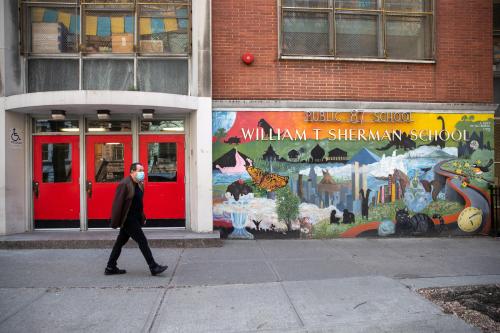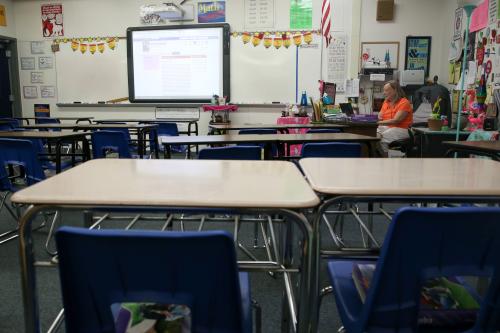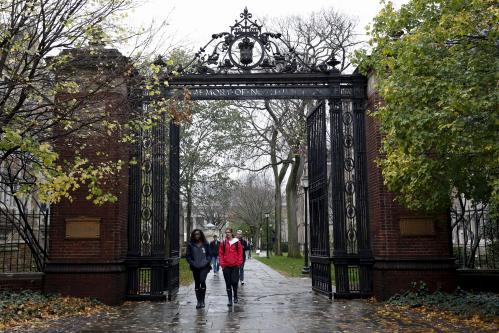During the COVID-19 pandemic, only 44% of school districts are both providing instruction online and monitoring students’ attendance and progress. Kids in these districts have a good chance of staying on grade-level during the coronavirus shutdown. Kids in the majority of districts, which are either providing no instruction or offering instruction but not tracking progress, have little or no chance of finishing their current grade and being ready for the next grade in the fall.
The differences among districts can’t be explained by capacity. Tiny rural districts excepted, public school systems employ hundreds to thousands of teachers, instructional specialists of all kinds, and entire central-office units focused on curriculum, instruction, and technology. Some of the best-staffed districts (e.g., my hometown of Seattle) are doing the least. Districts in more financially stressed areas, like Los Angeles County and Miami-Dade County, are doing more.
It’s pretty amazing what even tiny inner-city private schools have done during the COVID-19 shutdown. From the website of a tuition-free Catholic middle school in Seattle that enrolls the poorest of the poor:
“On Thursday, March 12, 2020, our students seamlessly moved from classroom to online and distance learning with our teachers. Students are hard at work at home. The online school day begins at 8am and assignments are due at 8pm. The lessons are asynchronous and replicate the differentiated learning instruction of our physical classroom. Teachers are available for 1:1 tutoring and support through 4pm. During the week of March 2, 2020, we procured gently-used laptops and secured internet connectivity for students to work from home. We are grateful to our community for their steadfast support while our work continues to ensure students remain on track with college-preparatory academics and beyond.”
Something like this can be seen on the websites of districts that are trying to teach their kids, as on charter, parochial, and independent school websites. Teachers have scrambled to get learning materials online and are engaged with students on grade-level learning every day. School leaders are also working on food, family support, and connectivity, just like the districts that are not doing much about instruction.
It’s too soon to tell how well these efforts to keep full-scale instruction going will work. Students might or might not need some remediation when they return. Some kids might not do the work, though daily check-ins and predictable scheduling implicit in the example above makes that unlikely. Odds of precipitous learning loss are lower for students who engage daily with grade-level courses than those who randomly access things that interest them. In time, we’ll also learn whether the emerging parent backlash against homeschooling applies to schools that provide definite structure and pacing for students’ daily work.
In this light, the equity concerns of school districts that have done little about instruction look ridiculous. Kids in school districts like Miami-Dade have immense advantages from the initiative taken by educators. Kids in districts that are not taking responsibility for daily learning will depend on their parents’ resources. Their results will vary: Some will be ready for anything when school reopens, and others will need intense, long-term remediation.
Why is this happening? Surely school-district leaders would rather not open themselves up to questions about why their students fell behind kids in other localities, or why teachers, while being paid, did not try to teach. The best that we can figure is that inactive districts are tied up in organizational and political barriers—too hard to get the central office to turn to a new task, too many scary provisions in the collective bargaining agreement, too hard to get all the teachers of one subject or grade level onto the same page. Some stakeholders might hope that the pandemic passes before innovations disrupt traditional teacher roles or definitions of school.
The fact that many school districts and even thinly resourced parochial schools can keep kids learning and engaged undercuts any reason for district inaction. Lagging districts are hurting only themselves and their students. New teacher roles and school models (including blended learning models that allow schools to reopen but maintain social distancing) are emerging and will continue to do so. Districts expecting public support in the hard times ahead need to stop wasting time and money and prove themselves now.






Commentary
During COVID-19, underperforming school districts have no excuse for standstill on student learning
May 6, 2020